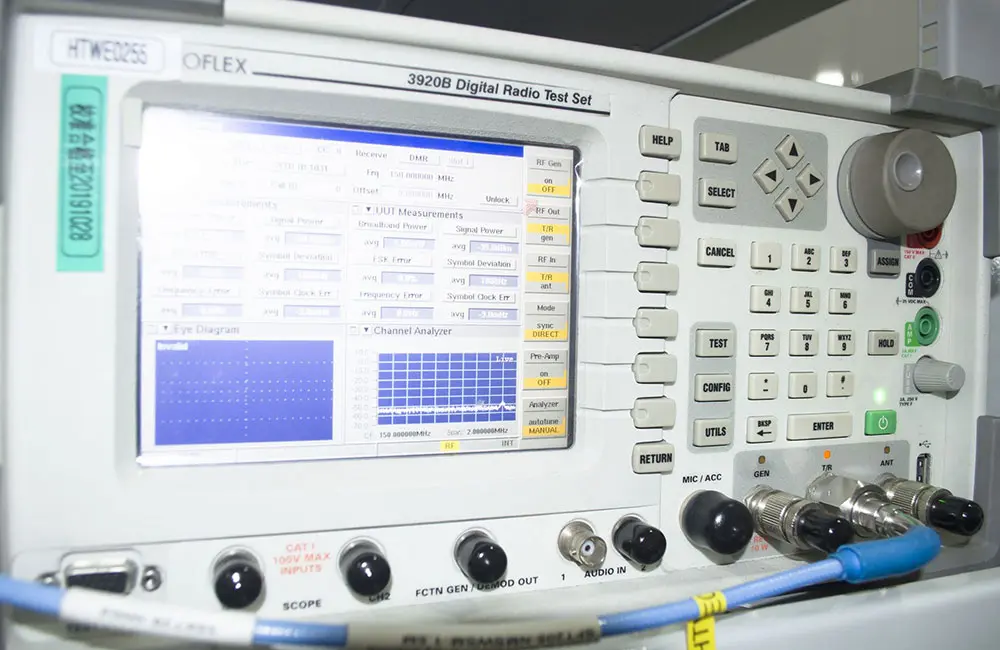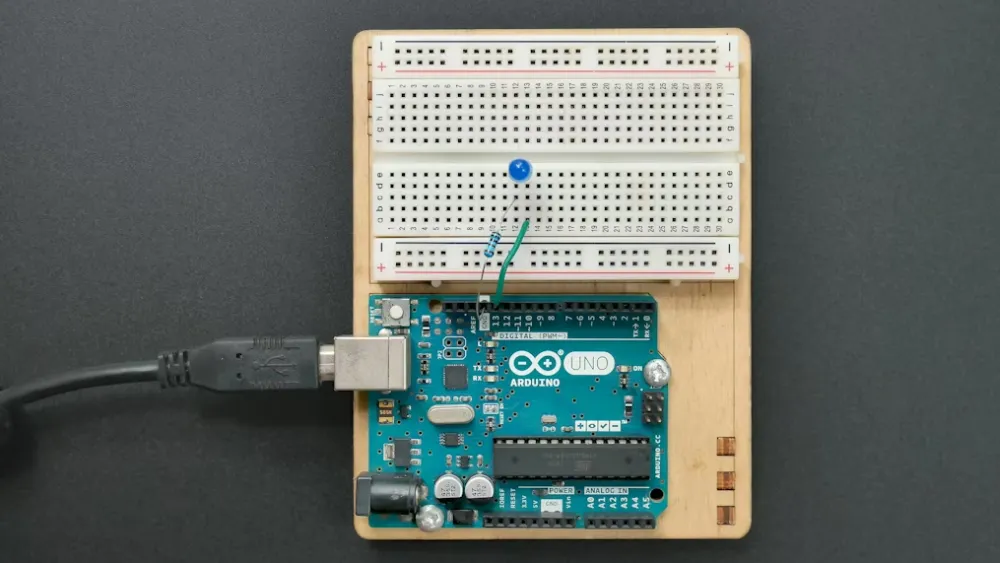
CE RED Test Laboratory in China
The EU Radio Equipment Directive (RED) 2014/53/EU has been in effect since 2016 and applies to all types of radio equipment. Manufacturers selling radio products in the EU and European Economic Area (EEA) markets must demonstrate that their products comply with the RED Directive and affix the CE mark on the products, indicating conformity with RED 2014/53/EU.

The necessary requirements of the RED Directive include:
- Art. 3.1a. Protection of the health and safety of the user and any other person
- Art. 3.1b. Adequate electromagnetic compatibility (EMC)
- Art. 3.2. Effective use of the radio spectrum to avoid harmfUL interference
- Art. 3.3. Meeting special requirements
European ce red refers to the Radio Equipment Directive (RED) for electronic and electrical products. All RF electronic and electrical products intentionally emitting radio frequency to Europe must meet the relevant electromagnetic compatibility standards, such as the European Telecommunications Standards Institute (ETSI) standards.
To align with the EU’s New Legislative Framework (NLF), on May 22, 2014, the EU Official Journal (L 153/62) published a new version of the Radio Equipment Directive 2014/53/EU, replacing the previous Radio and Telecommunications Terminal Equipment Directive 1999/5/EC. From June 13, 2017, the RED 2014/53/EU Directive officially replaced the RTTE 1999/5/EC Directive. From June 12, 2018, manufacturers must register the device type in the central system for radio equipment with a low level of compliance before placing it on the market.
The purpose of the RED Directive is to ensure easier market access and a higher level of protection for consumers' health and safety, as well as for poultry and property. To prevent harmful interference, radio equipment must have sufficient electromagnetic compatibility and effectively use the radio spectrum. The RED Directive covers safety, electromagnetic compatibility (EMC), and radio spectrum (RF) requirements. Radio equipment covered by the RED Directive is not subject to the low voltage directive (LVD) or the EMC Directive; their essential requirements are covered by the RED’s essential requirements with some modifications.
Scope of the RED Directive: all radio equipment with a working frequency below 3000 GHz. This includes short-range communication devices, broadband devices, and mobile communication devices, as well as radio equipment used solely for sound reception and TV broadcast services (e.g., FM radios and televisions). Examples include: 27.145 MHz remote control toys, 433.92 MHz remote controls, 2.4 GHz Bluetooth speakers, 2.4 GHz/5 GHz WiFi air conditioners, and mobile phones with internal RF intentional emission frequencies.
Typical products for RED certification:
- Short Range Devices (Wi-Fi, Bluetooth, Zigbee, RFID, Z-Wave, Induction Loop, NFC)
- Wideband Data transmission systems
- Wireless microphones
- Land Mobile
- Mobile/Portable/Fixed Cellular (5G/4G/3G) – including base stations and repeaters
- mmWave (Millimetre Wave) – Including wireless systems such as mmWave backhaul
- Satellite Positioning – GNSS (Global Navigation Satellite System), GPS
- Aeronautical VHF
- UHF
- VHF Maritime
- Satellite Earth Stations – Mobile (MES), Land Mobile (LMES), Very small aperture (VSAT), Aircraft (AES), Fixed (SES)
- White Space Devices (WSD)
- Broadband Radio Access Networks
- UWB/GPR/WPR
- Fixed Radio systems
- Broadband wireless access
- Intelligent Transport systems
- TETRA
- Broadcast radio and TV receivers
European Bluetooth RED testing standards:
For Bluetooth wireless products requiring European wireless RED certification, the following standards need to be met:
- RF (Intentional emission of RF part)
- EN 300328 V2.2.2
- EN 301489-1 V2.2.3
- EN 301489-17 V3.2.2
- EMC (Unintentional emission part, different product standards for different products, e.g., Bluetooth speakers)
- EN IEC 61000-3-2:2019
- en 61000-3-3:2013/A1:2019
- en 55032:2015/A11:2020
- EN 55035:2017 or en 55024:2010/A1:2015
- LVD (Low Voltage Directive, choose one of the following)
- EN 62368-1:2014+A11:2017
- or
- EN 60950
- EMF
- en 62479:2010
European Bluetooth RED testing projects:
RADIO TECHNICAL REQUIREMENTS SPECIFICATION IN EN 300 328
- Transmitter Conditions
- Test conditions
- Normal conditions for transmitting power
- Extreme conditions for transmitting power
- Test frequencies
- Transmitter Requirements
- Equivalent Isotropically Radiated Power
- Maximum e.i.r.p. Spectral Power Density
- Frequency Range
- Dwell Time
- Carrier Frequencies Separated
- Hopping Channel Number
- Medium access protocol
- Transmitter Spurious Emissions
- Receiver Requirements
- Receiver Spurious Emissions
European WIFI testing standards:
- RED RF standards
- EN 300328 V2.2.2 (For 2.4GHz)
- ETSI EN 301 893 V2.1.1 (For 5GHz)
- EN 301489-1 V2.2.3
- EN 301489-17 V3.2.2
If embedded in a certain type of product, the corresponding product standard must be met, e.g., multimedia products must meet:
- EMC standards
- EN IEC 61000-3-2:2019
- EN 61000-3-3:2013/A1:2019
- EN 55032:2015/A11:2020
- EN 55035:2017 or EN 55024:2010/A1:2015
- LVD (choose one of the following)
- EN 62368-1:2014+A11:2017
- EN 60950
- EMF
SAR-Specific Absorption Rate
SAR evaluates the RF energy’s harm to the human head and body, mainly reflected in the rate of electromagnetic energy absorbed by various human tissues. Refer to the following link for regional and standard requirements.
European WIFI testing projects:
- 4.1.1 RF OUTPUT POWER
- 4.1.2 MAXIMUM SPECTRAL POWER DENSITY
- 4.1.3 DUTY CYCLE, TX-SEQUENCE, TX-GAP
- 4.1.4 MEDIUM UTILISATION FACTOR
- 4.1.5 ADAPTIVITY
- 4.1.6 OCCUPIED CHANNEL BANDWIDTH
- 4.1.7 TRANSMITTER UNWANTED EMISSIONS IN THE OOB DOMAIN
- 4.1.8 TRANSMITTER UNWANTED EMISSIONS IN THE SPURIOUS DOMAIN
- 4.2.1 RECEIVER RADIATED SPURIOUS EMISSIONS
- 4.2.2 RECEIVER BLOCKING
- 4.2.3 GEO-LOCATION CAPABILITY
- 5.1.1 ELECTROMAGNETIC FIELDS
Documents required for CE RED certification:
- Antenna specifications (or antenna gain chart)
- Fixed frequency software (also called fixed frequency program. It allows the transmission module to continuously emit at a certain frequency point; generally, BT and WIFI must provide it)
- Bill of Materials
- Block Diagram
- Circuit Diagram
- Product Description and Concept of Operation
- Label Artwork
- Marketing or Design
- PCB Layout
- Copy of Declaration of Conformity
- Sub-Assemblies
- User Manual
- Declaration on Model Difference
- ISO 9001 Quality System Certification
Sample preparation for CE RED certification:
- 1-2 sets of complete samples
- 1-2 sets of fixed frequency samples
- Fixed frequency software
- Fixed frequency method
Fixed frequency sample conditions:
1. Connected with RF cables such as SMA connectors
2. Installed with fixed frequency software or provide fixed frequency software
3. For example, Bluetooth products generally need to provide a fixed frequency board (control board, protocol conversion between the computer and the sample, i.e., the bridge for human-machine control)
4. Meet the testing requirements (can fix frequency or hop frequency, can continuously transmit, etc.)
Email:hello@jjrlab.com
Write your message here and send it to us
 What Certifications for Wireless Products Exported
What Certifications for Wireless Products Exported
 Which Lab Provide Brazil ANATEL Certification Serv
Which Lab Provide Brazil ANATEL Certification Serv
 What is FDA Cytotoxicity Testing
What is FDA Cytotoxicity Testing
 How Much Does a Cytotoxicity Test Cost
How Much Does a Cytotoxicity Test Cost
 What is Biocompatibility Cytotoxicity Test
What is Biocompatibility Cytotoxicity Test
 Global Cyber Security Compliance for Connected Pro
Global Cyber Security Compliance for Connected Pro
 What Certifications for Exporting Monitors to Euro
What Certifications for Exporting Monitors to Euro
 Bluetooth Headphones Exported to Australia Certifi
Bluetooth Headphones Exported to Australia Certifi
Leave us a message
24-hour online customer service at any time to respond, so that you worry!




